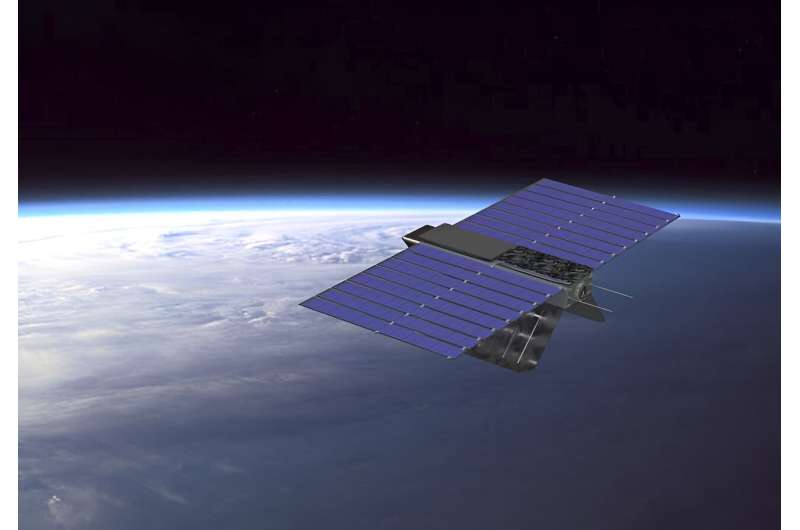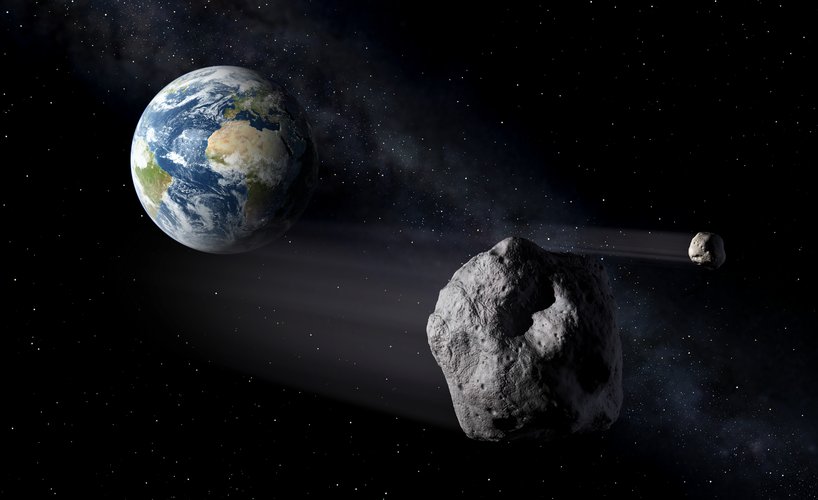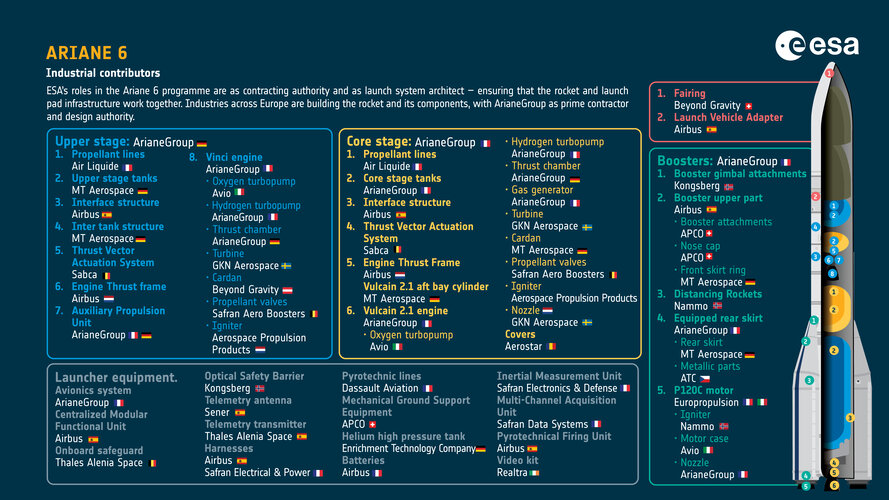U.S. Space Command ready for potential Russian satellite attack, general says
Monday, 24 June 2024 19:08

Europe aims to end space access crisis with Ariane 6’s inaugural launch
Monday, 24 June 2024 16:05

Webb captures star clusters in Cosmic Gems arc
Monday, 24 June 2024 14:00
An international team of astronomers have used the NASA/ESA/CSA James Webb Space Telescope to discover gravitationally bound star clusters when the Universe was 460 million years old. This is the first discovery of star clusters in an infant galaxy less than 500 million years after the Big Bang.
Could we put data centers in space?
Monday, 24 June 2024 13:42
Artificial intelligence has taken the world by storm lately. It also requires loads of band-end computing capability to do the near-miraculous things that it does. So far, that "compute," as it's known in the tech industry, has been based entirely on the ground. But is there an economic reason to do it in space? Some people seem to think so, as there has been a growing interest in space-based data centers. Let's take a look at why.
Space-based data centers have several advantages over ground-based ones. The first and most obvious is the near-unlimited amount of space in space. Second, there are plenty of potential options for novel power and cooling technologies that can't exist back on Earth. Third, using a space-based data center as a relay point for information could cut down on lag in data transfer between continents. Let's look at each in turn.
One of the significant constraints for data centers is space—they require large amounts of it, and it is expensive in the areas where they are most needed (i.e.
ESA astronaut class of 2022: Astro Chat with John McFall
Monday, 24 June 2024 11:30 Video:
00:24:06
Video:
00:24:06
John McFall, a member of the European astronaut reserve from the ESA astronaut class of 2022, brings a diverse background to his role. With experience as an orthopaedic and trauma surgeon and a former Paralympic sprinter, John is participating in the groundbreaking "Fly!" feasibility study. This initiative seeks to enhance our comprehension of the challenges posed by space flight for astronauts with physical disabilities, aiming to overcome these barriers. Tune in to discover more about John and the "Fly!" project.
This is Episode 9 of our ESA Explores podcast series, delving into everything you want to know about
SpaceX successful with booster replacement on Starlink mission
Monday, 24 June 2024 10:40
SpaceX was back at the launch pad Sunday with an updated rocket to finish off a Starlink mission it tried to send up earlier this month.
A Falcon 9 on the Starlink 10-2 mission lifted off at 1:15 p.m. from Cape Canaveral Space Force Station's Space Launch Complex 40 amid cloudy skies with 22 more Starlink satellites for the company's growing internet constellation that now numbers more than 6,100 satellites in orbit.
The launch came nine days since SpaceX last attempted to knock out the mission on June 14. That attempt had a rare scrub as the countdown clock reached 0 and the rocket was ultimately brought back from the pad to allow for last week's ASTRA 1P satellite launch to go up instead.
But the Starlink satellites returned to the pad, this time with a new first-stage booster, which flew for the 11th time and made another recovery landing on the droneship A Shortfall of Gravitas downrange in the Atlantic Ocean.
SpaceX did not reveal what was wrong with the original booster that was trying to fly for the 16th time.
Exercise examines response to long-term asteroid impact threat
Monday, 24 June 2024 09:58

Two large asteroids safely pass Earth just 42 hours apart
Monday, 24 June 2024 09:00
Two large asteroids will safely pass Earth this week, a rare occurrence perfectly timed to commemorate this year's Asteroid Day. Neither poses any risk to our planet, but one of them was only discovered a week ago, highlighting the need to continue improving our ability to detect potentially hazardous objects in our cosmic neighbourhood.
Ariane 6 who makes what infographic
Monday, 24 June 2024 07:16 Image:
Ariane 6 who makes what infographic
Image:
Ariane 6 who makes what infographic Save the date: ESA’s Living Planet Symposium 2025
Monday, 24 June 2024 05:35
Save the date for ESA’s next Living Planet Symposium, set for 23–27 June 2025 at the Austria Center Vienna. Held every three years, this premier Earth observation conference continues to expand in both size and scope. With the climate crisis intensifying, this event emphasises transitioning from ‘observation to climate action and sustainability for Earth’. Don't miss it!
SpaceX deploys another round of Internet satellites
Monday, 24 June 2024 03:37 SpaceX launched a Falcon 9 rocket carrying 22 Starlink Internet satellites into low-Earth orbit from Cape Canaveral in Florida at 1:15 p.m. ET Sunday.
The reusable first stage booster returned to the drone ship A Shortfall of Gravitas in the Atlantic Ocean about 8 minutes after launch. This was the 11th flight of the booster rocket and the 75th time this droneship has been used to recov
SpaceX launched a Falcon 9 rocket carrying 22 Starlink Internet satellites into low-Earth orbit from Cape Canaveral in Florida at 1:15 p.m. ET Sunday.
The reusable first stage booster returned to the drone ship A Shortfall of Gravitas in the Atlantic Ocean about 8 minutes after launch. This was the 11th flight of the booster rocket and the 75th time this droneship has been used to recov NASA pushes Starliner return to July
Monday, 24 June 2024 03:37 After numerous delays, NASA said Friday that the Starliner crew would return to Earth in July
The agency said in a blog post that it delayed Starliner's Tuesday departure from the International Space Station so it doesn't conflict with a series of planned ISS spacewalks.
The extra time also would afford Starliner astronauts Barry "Butch" Wilmore and Sunita "Suni" Williams more ti
After numerous delays, NASA said Friday that the Starliner crew would return to Earth in July
The agency said in a blog post that it delayed Starliner's Tuesday departure from the International Space Station so it doesn't conflict with a series of planned ISS spacewalks.
The extra time also would afford Starliner astronauts Barry "Butch" Wilmore and Sunita "Suni" Williams more ti 




